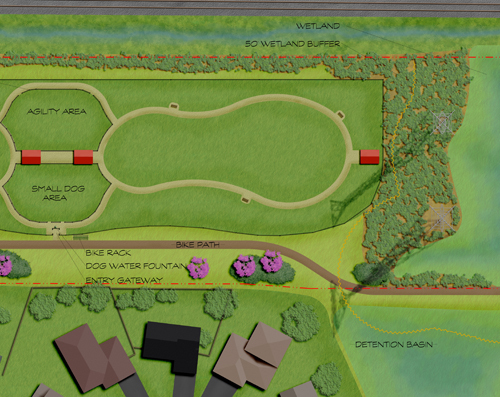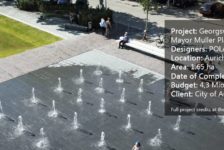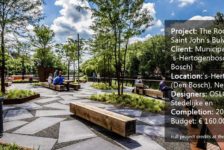Before I started this post, I figured it would make sense to check on exactly what type of economic commitment firms have to make for the software that most see as a necessary cost of running business today, and what I saw was truly startling to me, a former employee of a small firm.
Adobe Creative Suite CS4 Design Premium: $1,799.00
Autodesk AutoCAD Civil 3D (with BIM): $8,990.00 (with subscription)
Autodesk AutoCAD 2010: $4,445.00 (with subscription)
Autodesk 3DS Max Design 2010: #3,990.00 (with subscription)
ESRI Arc Info GIS: $?????? (ESRI doesn’t give prices online apparently…)
So a firm who wants to be able to use BIM for civil projects, along with CAD, 3DS Max renderings, Photoshop/Illustrator for renderings, Dreamweaver/Fireworks for a website and for some small web design for a client, and GIS for site investigations is looking at a $14,779 investment WITHOUT factoring the mystery cost of GIS.
That means you can get that software for one person, or hire someone with a year or two of experience for 4 months. Now granted, most places don’t need more than 1 seat of GIS per 10 people in the firm, but that is the un-added mystery cost, and just means you can hire that 1-2 year person for another month or two.
With an investment in software for 4 people equaling or surpassing the income for one of the employees, it is essential that a firm gets every ounce they can out of a given piece of software. Based on the experiences of many I have talked to, this is far from the way the software is being used.
This is caused by many problems, from yearly software updates that add new techniques so fast that they cannot be learned and optimized in use before the next update, to deadlines meaning projects must be rushed out the door. However, the biggest reasons I’ve heard about for this lack of effective software use is due to a certain amount of administrative ignorance about the software, and an unwillingness to put in the upfront labor needed to optimized work-flow and output.
These are all problems that in busy times are difficult to solve, as when a firm is busy they don’t feel they have the time for associates or principals to spend working on non-critical projects. However, when talking about job security and the slower pace of todays work environment in a firm, Keith Wilson said in this month’s issue of Landscape Architecture Magazine: “I’m learning some of the software programs that I have typically delegated to junior staff, like Photoshop and SketchUp.” More principals and senior staff taking this approach would be a great asset on many levels. First, they could more easily describe what they want to see, and what they want done, and they would have a more realistic idea of the time involved in a given project, rendering, or model. Second, they would have a realistic idea of what type of upfront work might streamline the process the next time it would need to be done.
Also, from a work-flow aspect, knowing the software also means you start to learn how different software interacts, which generally is “not very well”. This is made worse for junior staff at times by filing systems that may work with how a principal’s or administrator’s mind works, but not with how InDesign works. By learning this software, the people who have the final say over how the servers are organized will have a better idea of how they should be organized.
There would also be a level of trust built between the senior level and the junior level when the principals and senior associates go to junior staff for advise on what filters to use to get the look they want, or what color looks better for a rendering of photo-realistic grass.
The biggest way that firms could immediately impact their use of the software they have already paid TENS OF THOUSANDS OF DOLLARS for, especially in “These Economic Times” would be to use underused staff to catchup on upfront work that makes projects run more smoothly in the future. Whether its a set of CAD blocks for you’re firms planting pallet; a coordinated template for title blocks, renderings, power-points, business cards, and a firm website; Photoshop blocks and patterns, 3-D models for commonly used plants, buildings, or other items; or a new font that looks “just so”. These are all things that take some upfront work, and time at multiple levels of the firm, but that make the firm far more efficient, effective, and coordinated and put-together when time does become a factor in getting a job done.
I don’t know how many times I have talked to peers who complained about how they got in trouble for using the wrong font on a last minute rendering, but they have never seen the same font used twice at their firm. Or they didn’t know which of the 30 versions of the firm’s logo to use on which of the sheets they were putting together.
The biggest way that everyone I have talked to has said they have seen this problem is in the lack of good Photoshop plant blocks and texture patterns. After the initial front-end labor investment is made, it takes no more time to do this rendering:
then it takes to do this one:

Based on the amount you are already spending for one person to use Photoshop, isn’t it worth a labor investment so that even in a pinch you get the second result instead of the first?
Also posted at http://designplustech.wordpress.com
Published in Blog








Andrew Spiering
This is great! Thanks…
Colleen Murphy
This is very good information. I am presently doing just what you are talking about within my office. I think that getting to know the software helps to keep interest in landscape architecture. I find it so interesting to learn all that the software can now do. Colleen Murphy
Eric Gilbey
Frank, your discussion point is so timely. Many displaced landscape architects and landscape designers are finding themselves in the mode of consulting and offering outsourcing services, as was I when I lost my job a couple of years ago. You find out very soon that the cost to do business has a much higher outlay than expected. Sometimes the idea that working with other programs in “tandem” to get their jobs done become an even harder task to accomplish. I have found that working with Vectorworks Landmark gives me a better “all-in-one” offering than I have found anywhere, especially with Renderworks. It has proven to me to be hugely cost effective (about $2200 for the ability to do site design (including 3D modeling), artistic and photo realistic rendering, and handles GIS files too. For my clients who need to give/receive DWG files, I can import and export to DWG files too. Though not civil BIM, the architectural BIM is available if you get Vectorworks Architect, too. Thanks again Frank for the discussion.
Brian Hochstein
Also, if you only need a CAD program take a look at BricsCAD. I have not used it yet but it looks promising. It is supposed to work with LandFX and is a fraction of the price. They let you try it for free. I plan on giving it a try in the near future.
Frank Varro
Thanks for the comments guys, I’m probably going to try out at least some of the software you guys mentioned, along with things like gimp for a future post comparing the industry leading software with some of the cheaper, possibly better alternatives. By all means, shoot me a line if you know of any other packages you haven’t mentioned. This is an area with a lot of possible choices, and one where most people are not aware of all of the choices available.
Thanks again for the comments!
Noah Billig
ASLA has this info:
http://www.asla.org/ContentDetail.aspx?id=10762&terms=%22open+source+software%22
Has anyone tried GRASS GIS? It looks complicated.
Bricscad seems very promising. Thanks for the heads-up.
Hard to say if the open-source stuff is worth the effort. For example, I’m trained on Adobe CS, so is it worth the time to retrain on open-source software (GIMP, etc)? I guess it’s all about getting the most bang for your buck (and time) and using software that really works for the job intended.